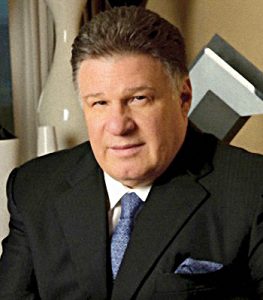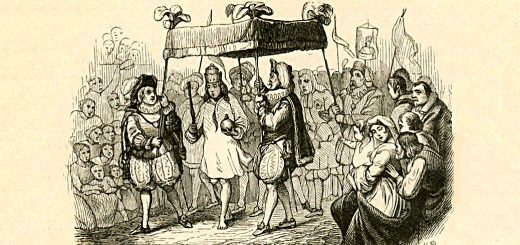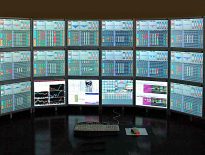Victor Sperandeo – Markets Grow Old Too

Today’s post is a profile of Guru investor Victor Sperandeo, who appears in Jack Schwager’s book New Market Wizards. His chapter is called Markets Grow Old Too.
Contents
Victor Sperandeo
Victor Sperandeo appears in Jack Schwager’s book “New Market Wizards”.
- His chapter is called His chapter is called Even Markets Grow Old.
Career
Victor Sperandeo started out on Wall Street in the 1960s, first as a “quote boy” and then a statistical clerk for Standard & Poor’s.
- He was fired from this “stupifyingly boring” job for making too many errors.
Somehow he talked his way into an option trading position, switching to another firm in 1969 to get on commission rather than salary.
- After six months he was doing so well that they wanted to put him on salary.
So he switched jobs again, only to find expense allocations eating into his commissions.
- So in 1971 he launched his own firm, Ragnar Options.
At this point, options were “tailor-made to the customer’s specifications” rather than standardised and traded on an exchange.
When Ragnar merged with another firm in 1978, Sperandeo joined Interstate Securities.
- Here he was completely independent, with a 50/50 split of both expenses and profits.
In 1986 Interstate went public and Sperandeo started Rand Management Corporation, taking in public money.
Performance
Sperandeo focuses on loss avoidance, and managed 18 winning years before a loss in 1990.
- His average annual gain was 72%.
Poker
I think my first related interest was an enthusiasm for poker. As a teenager, I literally earned a living by playing poker.
If you played only the hands in which the odds were in your favor and folded when they were not, you would end up winning more times than you lost.
When I was twenty years old, I made a complete survey of the New York Times employment section and discovered that three professions offered more than $25,000 per year as a starting salary: physicist, biologist, and OTC trader.
I didn’t know exactly what an OTC trader did, but I obviously didn’t have the educational background for being a physicist or biologist and OTC trading sounded a little bit like playing cards.
I learned about the markets by reading everything on the subject that I could get my hands on.
Successful trading, or poker playing for that matter, involves speculating rather than gambling – taking risks when the odds are in your favor.
Market stages
Market price movements are like people – they have statistically significant life-expectancy profiles. In a market that is in a stage of old age, it is particularly important to be attuned to symptoms of a potential end to the current trend.
The median extent for an intermediate swing in the Dow during a bull market is 20%. When the market is up more than 20 percent, the odds for further appreciation begin to decline significantly.
To use a life insurance analogy, most people who become involved in the stock market don’t know the difference between a twenty-year-old and an eighty-year-old.
Trading the market without knowing what stage it is in is like selling life insurance to twenty-year-olds and eighty-year-olds at the same premium.
Sperandeo thinks that 20% moves are common for two reasons:
- 20% is more that two years of “value” (average growth) in the US stock market.
- 20% is a big enough change psychologically that people can notice that things are more expensive. (( I’ve seen other studies which suggest that a 15% change in prices – or wages – is the smallest that people can really notice ))
Bottoms
In the case of 1974,1 went long the world on December 6. That day proved to be the exact bottom of the market.
There was a Dow Theory buy signal-the Dow Jones Industrial index had made a new low, but the Transportation index and the S&P 500 had not. In addition, the volume on the break to new lows was relatively light.
Also, we had been in a bear market for a long time, and bearish sentiment was pervasive. Finally, bad news was starting to lose its impact on the market-bearish news stories would come out, and stocks would essentially lie flat.
Definitions
Schwager was puzzled that at the time of the interview (April 1991) the US had been in a bull market for nine years.
By my definitions, the bull market that began in 1982 ended in November 1983. One essential criterion of an uptrend is that you do not take out a prior major relative low.
The bear phase that lasted from June 1983 to July 1984 consisted of two major downswings – that is, you took out a prior major relative low.
To qualify as a bear market, the price move must last a minimum of six months and be equal to at least 15 percent. Both of these conditions were met by the price decline from the June 1983 high to the July 1984 low.
Risk
I analyze risk by measuring the extent and duration of price swings. For example, if the market has risen 20% percent in roughly 107 days, even if I’m still extremely bullish I’ll have a maximum position size of 50 percent, because statistically we’ve reached the median historical magnitude and duration of an up move.
Losses are always predetermined so that I can measure my risk. Planning where to get out before putting on the trade is a means of enforcing emotional discipline.
In effect, this means that Sperandeo uses stops.
Uncertainty
Whenever there’s a tax proposal, or some other major legislative uncertainty, I now get flat immediately.
The market will always run to the sidelines until it knows what will happen.
Training
In the 1980s, Sperandeo attempted to train other traders, mcu like the Turtles (though with less success):
Over a five-year period, I trained thirty-eight people. Each of these people spent several months by my side while I taught them virtually everything I knew about the market.
Out of these thirty-eight people, five made money. You can’t train people how to trade by just imparting knowledge. The key to trading success is emotional discipline.
Although only 5 of the 38 made money, the winners did well enough for Sperandeo to come out ahead.
The only unfortunate thing was that these five people made so much money that they quit.
Sperandeo says that he wouldn’t repeat the experiment.
Intelligence
Making money has nothing to do with intelligence. To be a successful trader, you have to be able to admit mistakes. People who are very bright don’t make very many mistakes.
In trading the person who can easily admit to being wrong is the one who walks away a winner. There is probably no other profession where you have to admit when you’re wrong.
In trading, you can’t hide your failures. Your equity provides a daily reflection of your performance. The trader who tries to blame his losses on external events will never learn from his mistakes.
Dieting
Most people have the necessary knowledge to lose weight – that is, they know that in order to lose weight you have to exercise and cut your intake of fats.
However, despite this widespread knowledge, the vast majority of people who attempt to lose weight are unsuccessful. Why? Because they lack the emotional discipline.
Taking losses
The single most important reason that people lose money in the financial markets is that they don’t cut their losses short.
Most people view losing as a hit against their self-esteem. As a result, they postpone losing. They think of all sorts of reasons for not taking losses
They select a mental stop point and then fail to execute it. They abandon their game plan.
Buy and hold
The greatest misconception people have about the market is the idea that if you buy and hold stocks for long periods of time, you’ll always make money.
Anyone who bought the stock market at any time between the 1896 low and the 1932 low would have lost money.
Anyone who bought the market between the 1962 low and the 1974 low would have lost money.
From 1929 to 1932, the market dropped 94%. During 1973- 74, the “nifty fifty” stocks lost over 75%of their value.
Cutting back
When I’m doing things correctly, I tend to expand my rate of involvement in the market. Conversely, when I start losing, I cut back my position size. The idea is to lose as little as possible while you’re in a losing streak.
When I get into a losing streak, I like to read a nonfiction book to learn something new. It takes my mind off of trading and by enhancing my knowledge, improves my self-esteem. The key is to do something positive.
When you’re in a slump, try to be patient and wait for a trade that you feel very confident about and keep the bet size small. Your goal should not be to make lots of money but rather to get your confidence back by making correct decisions.
Trading objectives
I view the objectives in trading as a three-tiered hierarchy. First and foremost is the preservation of capital.
When I first look at a trade, I don’t ask, “What is the potential profit I can realize?” but rather, “What is the potential loss I could suffer?”
Second, I strive for consistent profitability by balancing my risk relative to the accumulated profits or losses. Consistency is far more important than making lots of money.
Third, I attempt to achieve superior returns. I do this by increasing my bet size after, and only after, periods of high profitability.
The key to building wealth is to preserve capital and wait patiently for the right opportunity to make the extraordinary gains.
Technical analysis
I’ve made too much money trading on technical observations to dismiss technical analysis. However, I do believe that technical analysis alone is insufficient.
I like to keep it simple. My primary methodology is a three-step process to define important trend changes.
Let me take the example of trying to identify a top in a rising market. The first step is waiting for the uptrend line to be broken.
You draw the line from the lowest low to the highest low immediately preceding the highest high, making sure that the connecting point you select does not result in the trend line passing through any prices between the two points.
Once the trend line is broken, I then look for an unsuccessful test of the recent high. Prices might actually penetrate the previous high by a modest amount and then pullback below that high.
The third and final confirmation of a trend change would be the downside penetration of the most recent relative low.
Failed breakouts
The reason these types of failures often mark major turning points is that many traders set their stops at or near the previous high or low.
The locals [floor traders] try to profit by anticipating that the activation of a large pocket of stops will cause a minor extension of the price move.
They will then use such a price extension as an opportunity to liquidate their positions for a quick profit. It’s in the interest of locals to trigger heavy concentrations of stop orders
With valid fundamentals, the move will tend to extend. But if it was largely caused by locals, prices will tend to reverse.
Indicators
In the stock market, the indicator I give the greatest weight is the two-hundred-day moving average.
One study I saw demonstrated that by simply using the two-hundred-day moving average on the Dow Jones stocks, an investor could have earned an average annual return of 18% over fifty years – double the buy-and-hold return.
Conclusions
This is another fun chapter from Jack Schwager, with “Trader Vic” turning out to be both entertaining and informative.
Like many successful traders (and blackjack / poker players) Sperandeo plays the odds, betting more when his chances are best.
- When they are not so good, or when he hits a losing streak, he pulls back.
He’s always quick to cut losses, but even more so when his positions are larger.
- He’s no fan of buy-and-hold.
- And he sees the willingness to admit mistakes as the most important characteristic in a successful trader.
All of which is relatively easy to apply as a private investor.
Until next time.


















